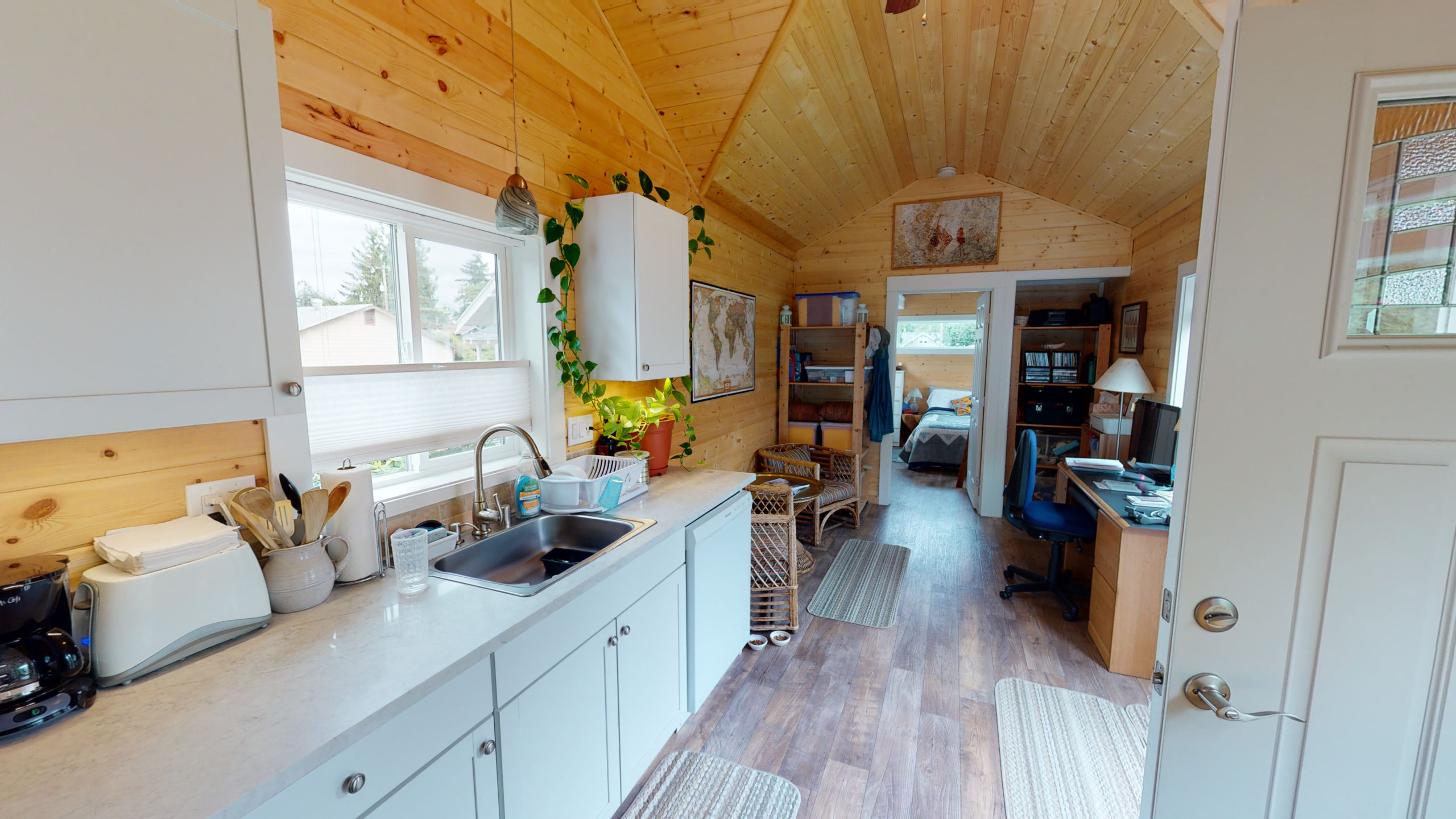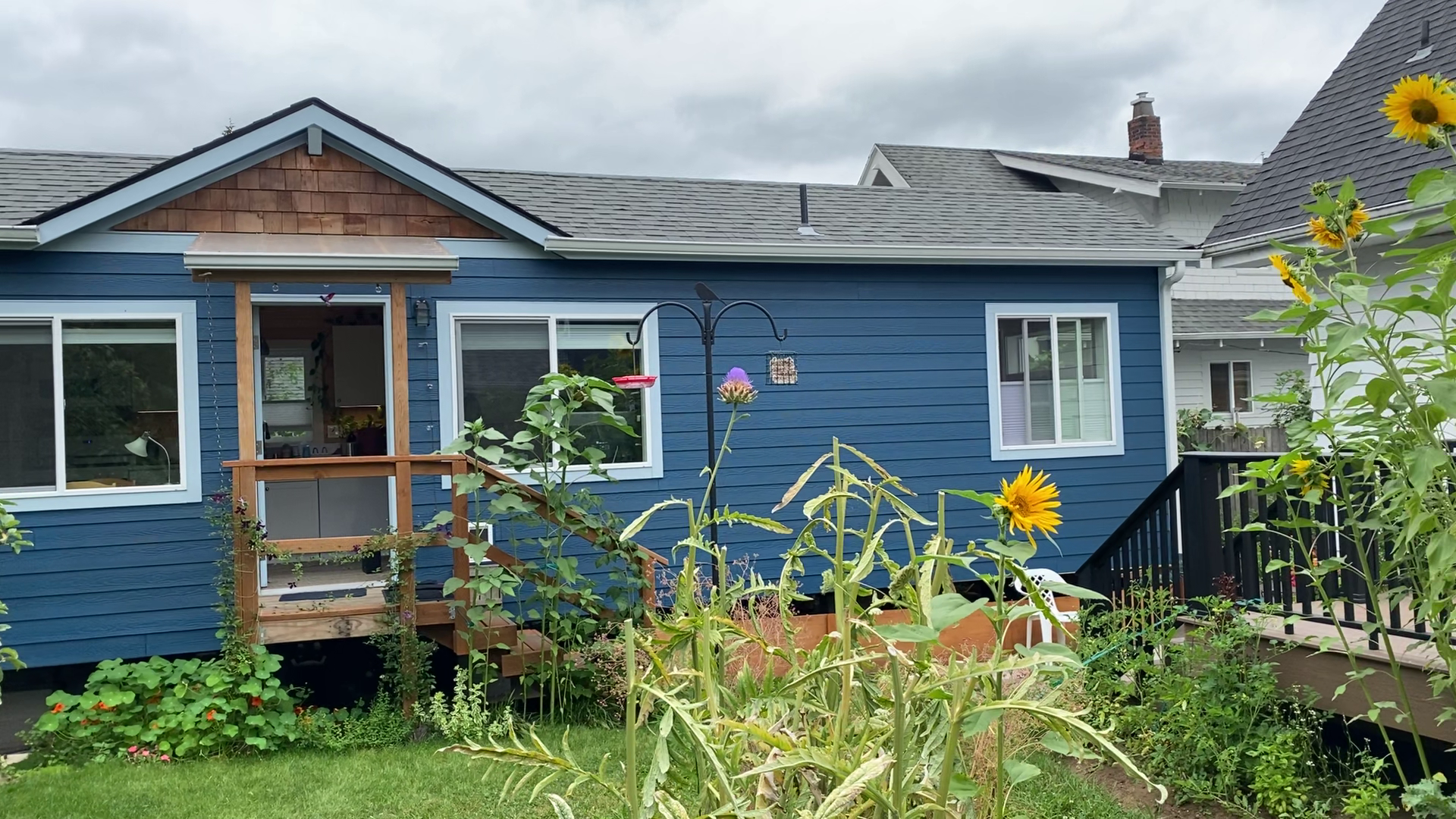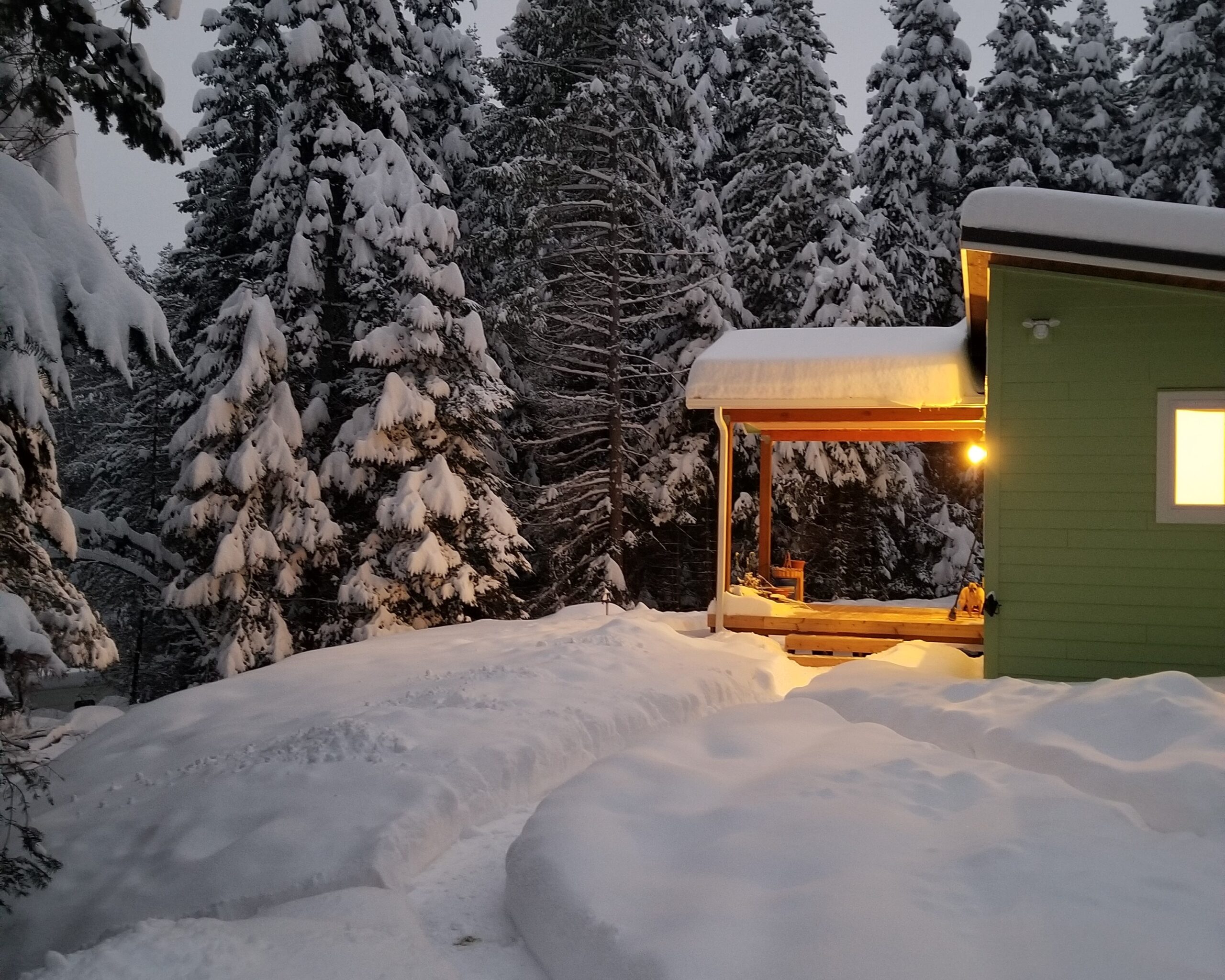Today we’ve got a Model C put on a trailer and we’re down in the Woodstock Portland area where we’ve got a house on wheels. This is a modular home built to the IRC codes.
Planning for the Future
Many times I’ve had people ask me, “can I put your house on wheels? I’d like to keep the flexibility and mobility that way.” The answer is yes! Absolutely! This particular home was a great example.
We’ve got a 10″ steel I-beam, a detachable tongue and a 2 and 5/16 ball connection. The homeowner has added nice little skirting around her Model C to keep things looking good for the short term while she’s here.
Her long-term plan is to take this house and move it out to her son’s property out in the country down the road. The nice thing is the insignia and the state approval is already done because of how Wolf Industries constructs their home. Now, all the jurisdiction at the new location has to do is look at the tag verifying approval from the state.

The homeowner has actually been here for 18 months – going on so a year and a half – and the home is aging very well. As you can tell the hardy plank siding and trim are holding up extremely well and the caulking job the team did back when they installed this is still in excellent condition. Additionally, we had to put in a trench to pipe the sewer into their existing house.
Things to Consider
One thing to consider when keeping a tiny home on wheels is the elevation of the house. This particular house is sitting quite a bit higher than you would typically be used to walking into. This is set on a slab, but also requires additional space because we’ve got wheels and the whole under carriage of the trailer. So if you’re thinking about keeping it on wheels keep that in mind you’re going to have steps or a ramp to gain entrance.
To place a home on wheels, we construct the unit as usual then attach it to a triple axle trailer with removable tires. An S.O cord feeds the power connection using a 50-amp RV plug, permitted to meet Portland requirements and set up through the electrical panel of the main house through a trench.
The connection utilizes an RV drop – which is a special lid that you’re able to kick with your toe and lift up so that you don’t get your hands messy. That pipes to the septic system and then we take it from there and run the pipe through. The water feeding the house is sources from an outdoor hydrant and then we add some heat tape to make sure it doesn’t freeze and burst during cold weather.
Propane Versus’ Natural Gas
In the case of this home, the owner needs propane because they’re keeping it on wheels and in the future plan on putting it on some property out in the country at which point they wouldn’t have natural gas. So in an effort to plan ahead, we put in propane.
A regulator and feed line were added along with multi-fill valves so you can get the truck to back up to it and fill rapidly. Typically a full tank will last at least six months with these small homes because they’re so energy efficient. The gas is then fed through an iron pipe into the house and that just carries onto the appliances.





Hello, what’s the biggest home left on wheels you can make and can you make it to use electricity vs has or propane? Thank you!
Hi Debbie,
All of our single units can be placed on wheels, but they cannot be permitted to be permanent when left on wheels. They are also not rated as a tiny home or RV so cannot be pulled like a typical RV or tiny home. We can switch to electric if you prefer. Let me know if you have any other questions at sales@wolfind.com.